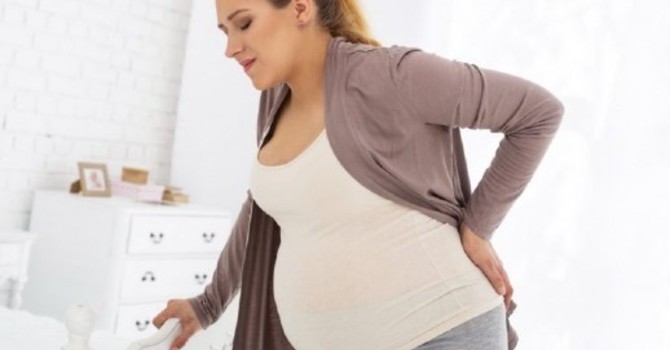
Sleeping Safely and Comfortably in the Second and Third Trimesters
As your baby bump grows, finding a comfortable sleep position becomes… let’s say, a bit of a challenge. But did you know that how you sleep during pregnancy, especially during the second and third trimesters, can affect not just your comfort, but also your baby’s health?
In this post, we’re going to cover:
-
The safest sleep position in late Pregnancy:t positions to avoid (and why)
-
How to use pillows and wedges to sleep more comfortably
-
A simple approach you can use every night
What’s the Best Position to Sleep in During Pregnancy? According to experts, such as the NHS and Health Canada, the safest position to sleep in after 20 weeks is on your side – ideally, he left side, but the right side is also acceptable. Why? Because of side-sleeping:
-
Helps keep blood flowing freely to your baby and uterus
-
Takes pressure off major blood vessels like your vena cava and aorta
-
Reduces the risk of stillbirth in the third trimester
-
Can ease back pain, shortness of breath, heartburn, and swelling
Suppose you’re already a side sleeper – great! If you usually sleep on your back or stomach, it’s a good time to start practicing your side-lying setup.
Why Back-Sleeping Isn’t Recommended in the Third Trimester
Multiple studies (including one published in The Lancet) have shown that falling asleep flat on your back during pregnancy reduces blood and oxygen flow to your baby. This can slightly increase the risk of stillbirth. Which is why organizations like the Society of Obstetricians and Gynecologists of Canada (SOGC) now recommend sleeping on your side.Sleepinging on your back can also cause:
-
Dizziness or nausea (from blood vessel compression)
-
Worsened back pain
-
Snoring or shortness of breath
-
More swelling in the legs or feet
That said, if you wake up on your back, don’t panic. Just roll to your side and go back to sleep. What matters most is the position you fall asleep in (that’s when you spend the most time still).
What About Sleeping on Your Stomach?
Fine in early pregnancy, once your belly starts to grow (usually by the second trimester), stomach sleeping becomes uncomfortable and can place pressure on your uterus. At that point, most people naturally switch to side-sleeping.
If you miss belly-down snoozing, try hugging a pillow while side-lying or resting in a ¾ tilt (almost on your stomach but supported safely).
Pillow Tips for Better, Safer Sleep
Here’s how to turn your bed into a pregnancy sleep sanctuary using pillows and wedges:
-
Between your knees – Keeps hips aligned and eases pelvic pain
-
Under your belly – Supports the bump and reduces back strain
-
Behind your back – Stops you from rolling flat and gives extra spinal support
-
Full-body pillows (like U- or C-shapes) – Hug and cradle your whole body
-
Elevate your upper body if you’re dealing with reflux or snoring
-
Keep the room cool and comfy – overheating can disrupt sleep
Everyone’s body is different, so play with other setups. Most of our prenatal massage clients find that 2–3 well-placed pillows make a massive difference in how long they can stay asleep without waking up sore or uncomfortable.
Final Tips for Sweet Dreams
-
Start sleeping on your side by 20 weeks
-
The left side is best, but the right side is perfectly safe too
-
Avoid sleeping flat on your back in the third trimester
-
Use pillows to support your bump, back, and hips
-
Don’t stress if you wake up in a weird position – roll over
With these simple strategies, you’ll be well on your way to a safer, more restful night of sleep for both you and your baby.
Sources
- NHS. (2007, July). How can I sleep comfortably with my bump? [Video]. YouTube. https://youtu.be/-Ohc_kPk-aI
-
NHS (2021). Sleep and tiredness in pregnancy.IC, Health Canada. (2022). Prenatal Care: Safe Sleep Recommendations
-
Society of Obstetricians and Gynecologists of Canada (SOGC). (2020). Clinical Practice Guideline: Management of Stillbirth
-
Heazell, A. E. P. et al. (2017). Association between maternal sleep position and late stillbirth: A systematic review and meta-analysis. The Lancet, 389(10085), 1654–1664.
-
American College of Obstetricians and Gynecologists (ACOG). (2021). FAQs: Sleep During Pregnancy
-
Canadian Physiotherapy Association – Women’s Health Division. (2023). Managing Pelvic Girdle Pain in Pregnancy
Delia Caranci
Contact Me


